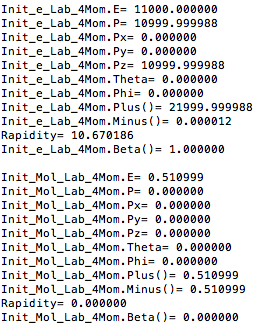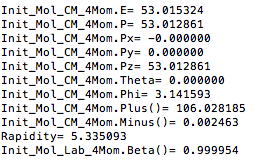Difference between revisions of "Uniform distribution in Energy and Theta LUND files"
| Line 72: | Line 72: | ||
==Using Initial Condition based on After Collision in CM Frame== | ==Using Initial Condition based on After Collision in CM Frame== | ||
| − | The energy and total momentum of the Moller and scattered electron remain the same under a rotation in any frame of reference. After the collision, these quantities remain the same, but the x, y, z components change. | + | The energy and total momentum of the Moller and scattered electron remain the same under a rotation in any frame of reference. After the collision, these quantities remain the same, but the x, y, z components change. |
| − | + | In this frame, we can cycle through values of theta from 90 to 180 degrees which physically correspond to a stationary electron being impinged by an electron. | |
| − | <center>< | + | <center>[[File:xz_lab.png | 400 px]]</center> |
| + | <center>'''Figure 3: Definition of Moller electron variables in the CM Frame in the x-z plane.'''</center> | ||
| + | <center>Using <math>\theta '_2=\arccos \left(\frac{p^'_{2(z)}}{p^'_{2}}\right)</math></center> | ||
| − | |||
| − | + | {| class="wikitable" align="center" | |
| + | | style="background: gray" | <math>\Longrightarrow {p^'_{2(z)}=p^'_{2}\cos(\theta '_2)}</math> | ||
| + | |} | ||
| − | + | ||
| + | |||
| + | Checking on the sign resulting from the cosine function, we are limited to: | ||
| + | |||
| + | {| class="wikitable" align="center" | ||
| + | | style="background: red" | <math>0^\circ \le \theta '_2 \le 60^\circ \equiv 0 \le \theta '_2 \le 1.046\ Radians</math> | ||
| + | |} | ||
| + | |||
| + | Since, | ||
| + | <center><math>\frac{p^'_{2(z)}}{p^'_{2}}=cos(\theta '_2)</math></center> | ||
| + | |||
| + | |||
| + | <center><math>\Longrightarrow p^'_{2(z)}\ should\ always\ be\ positive</math></center> | ||
Revision as of 18:28, 25 May 2016
File:LUND Spread.C
The LUND file is created by creating an isotropic distribution of particles within the Moller Center of Mass frame of reference. These particles are also uniformly distributed through the angle theta with respect to the beam line in the range 5-40 degrees. This is done at a set angle phi (10 degrees) with respect to the perpendicular components with respect to the beam line.
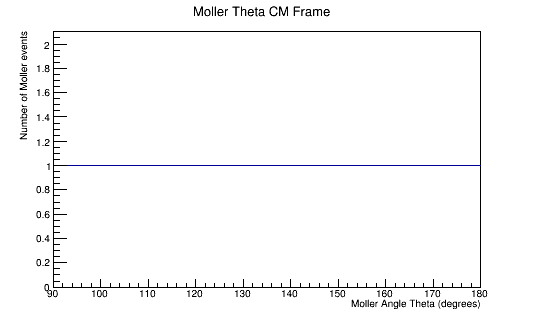
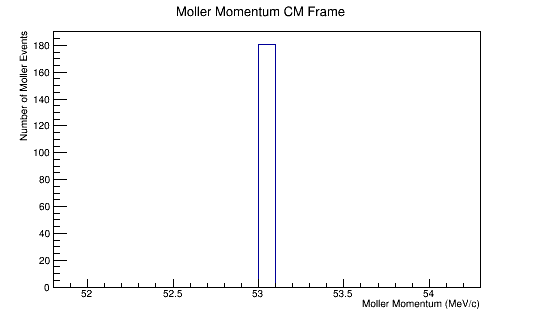
Center of Mass for Stationary Target
For an incoming electron of 11GeV striking a stationary electron we would expect:
Boosting to the Center of Mass Frame:
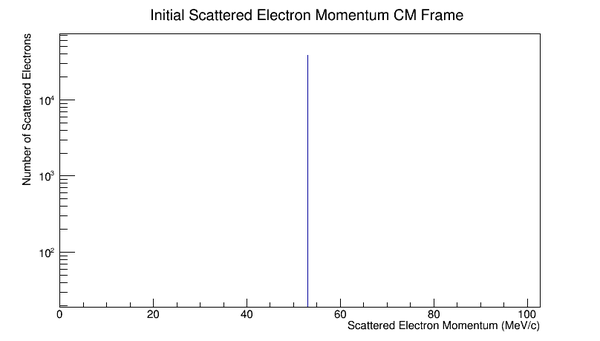
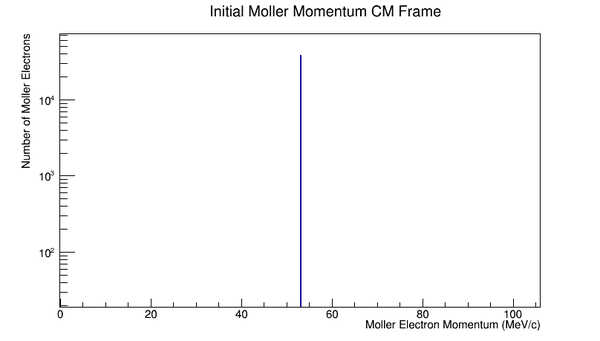
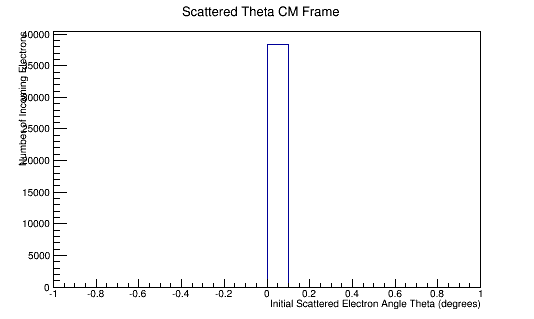
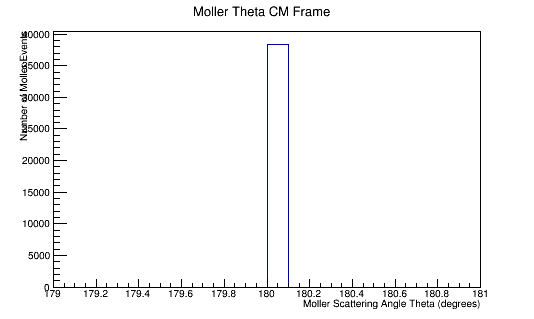
Phase space Limiting Particles
Since the angle phi has been constrained to remain constant, the x and y components of the momentum will increase in the positive first quadrant. This implies that the z component of the momentum must decrease by the relation:
In the Center of Mass frame, this becomes:
Since the momentum in the CM frame is a constant, this implies that pz must decrease. For phi=10 degrees:
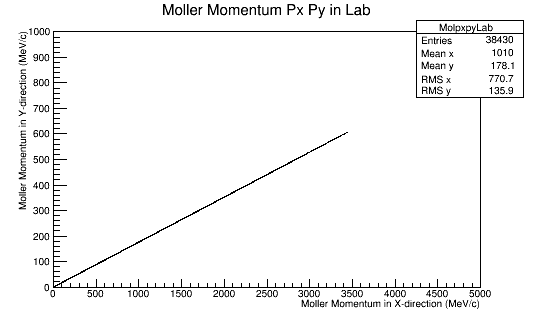
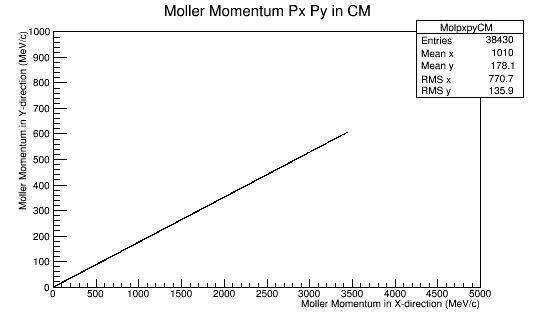
This is repeated for rotations of 60 degrees in phi in the Lab frame.
We can use the variable rapidity:
where
this implies that as
For forward travel in the light cone:
For backward travel in the light cone:
For a particle that transforms from the Lab frame to the CM frame where the particle is not within the light cone:
These particles are outside the light cone and are more timelike, thus not visible in normal space. This will reduce the number of particles that will be detected.
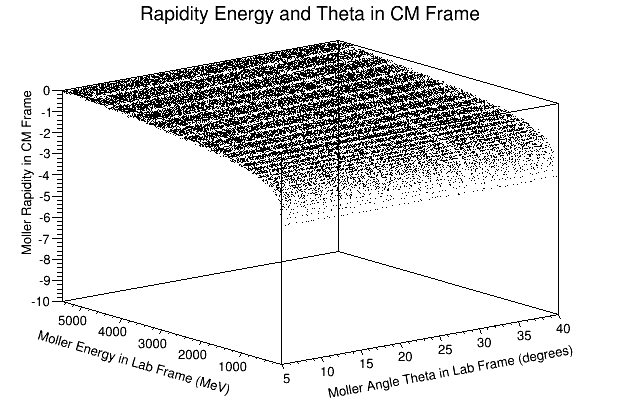
Using Initial Condition based on After Collision in CM Frame
The energy and total momentum of the Moller and scattered electron remain the same under a rotation in any frame of reference. After the collision, these quantities remain the same, but the x, y, z components change.
In this frame, we can cycle through values of theta from 90 to 180 degrees which physically correspond to a stationary electron being impinged by an electron.
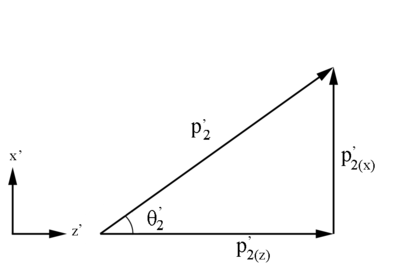
Checking on the sign resulting from the cosine function, we are limited to:
Since,
